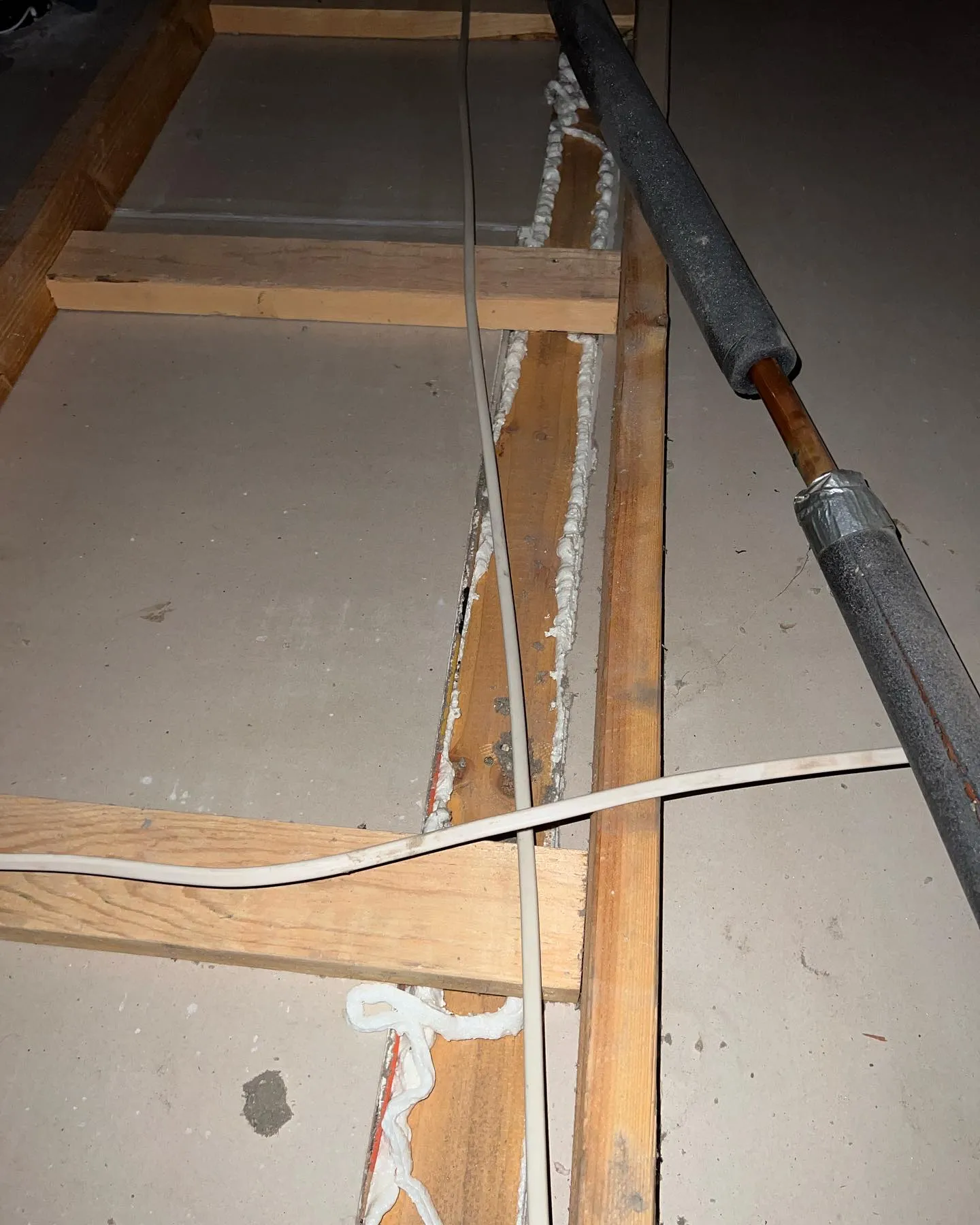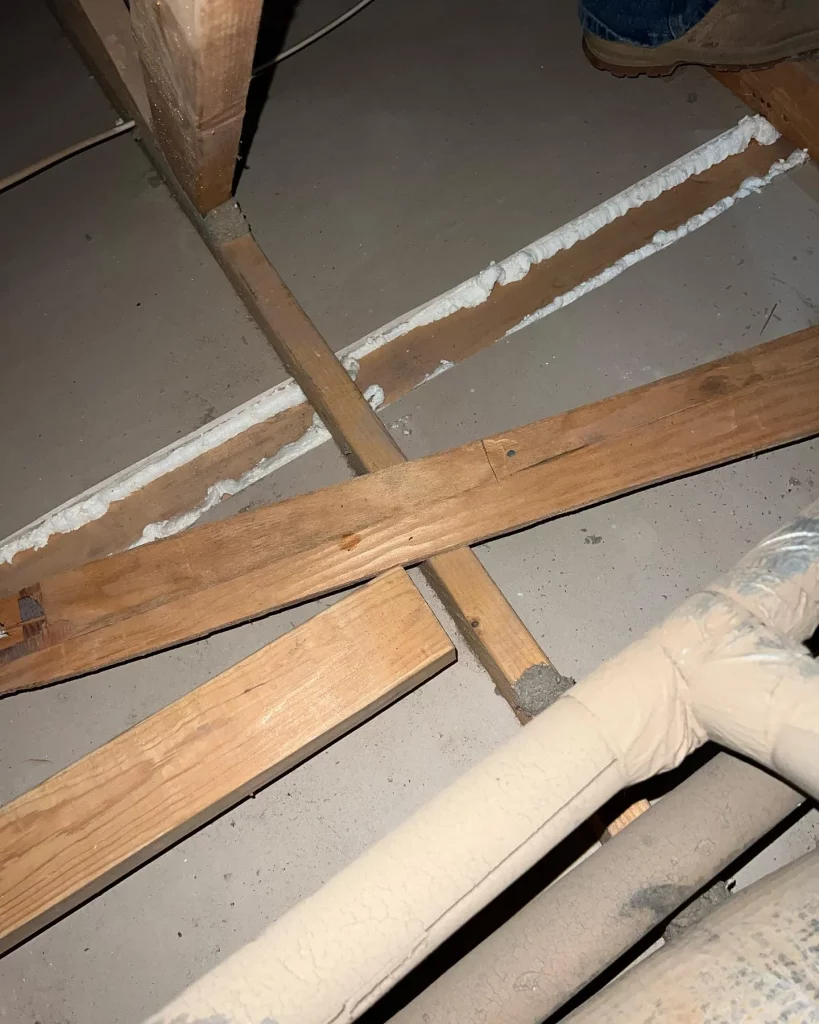
Air sealing minimizes the leakage of conditioned air through gaps and cracks in a structure. In Avondale, AZ, where summer temperatures often exceed 110°F, uncontrolled air loss places continuous strain on HVAC systems. By reducing this leakage, air sealing directly enhances system efficiency and extends operational life.
A properly sealed building envelope reduces the frequency and intensity of HVAC cycling. This stabilizes indoor temperature with less energy use, resulting in measurable system performance improvements and a reduction in wear on compressors, fans, and coils. The following sections explain how air sealing delivers those outcomes with supporting data, practical considerations, and technical specifications based on regional experience.
High leakage rates cause HVAC units to compensate for lost air by running longer and more frequently. Sealing these leakage points removes this burden.
In Avondale, outdoor air often carries dust and extreme heat. Limiting its entry helps maintain indoor air quality and temperature consistency.
| HVAC Component | Effect of Air Sealing | Without Air Sealing | With Air Sealing |
|---|---|---|---|
| Compressor | Reduced runtime and lower load | Frequent cycling, premature failure risk | Runs less often, operates under stable load |
| Evaporator Coil | Maintains consistent dew point | Prone to freezing due to overcompensation | Reduced freezing risk, better humidity control |
| Air Handler | Lower velocity demand | Operates at high speed to meet demand | Balanced speed, extended service life |
| Filters | Stays cleaner longer | Clogged more quickly due to dust infiltration | Less frequent replacement needed |
| Ductwork | Preserves pressure balance | Pressure drops and inefficiency | Optimized airflow and pressure retention |
| Metric | Result Without Air Sealing | Result With Air Sealing |
|---|---|---|
| HVAC runtime per day (avg) | 8-11 hours | 5-7 hours |
| Indoor temperature fluctuation | Up to ±5°F | Within ±2°F |
| Air leakage rate (ACH50) | 10-15 ACH | 3-5 ACH |
| Average annual system service | 2-3 visits/year | 1-2 visits/year |
| Estimated system lifespan | 10-12 years | 15-18 years |
Source: Department of Energy, Building America Program; Arizona Energy Efficiency Study 2023

Hot, arid conditions in Avondale cause consistent thermal expansion and contraction in building materials. These shifts create gaps around windows, doors, and penetrations. Without air sealing, HVAC systems fight these leaks daily, reducing their performance and life expectancy.
Bonus Tip: In older stucco homes common to Avondale, focus first on sealing attic bypasses and wall penetrations, where air loss is often highest.
Bonus Tip: Use blower door tests to measure leakage rates before and after sealing for quantifiable proof of improvement.
Yes. Insulation slows heat transfer, but air sealing blocks airflow. Both are required for full efficiency.
Typical residential jobs take 1 to 2 days depending on the size and condition of the building.
No. Proper sealing is paired with ventilation standards to maintain fresh air without energy loss.
The attic is a high-priority area, but effective results require a whole-building approach.
Air sealing in Avondale, AZ reduces HVAC strain by keeping conditioned air inside and unconditioned air out. In Avondale’s climate, this translates into fewer system cycles, lower repair frequency, and longer operational life. Seal the envelope, monitor leakage metrics, and align upgrades with insulation and ventilation needs.
To improve HVAC efficiency in Avondale, seal the building envelope where it counts. All Valley Insulation LLC offers targeted solutions that work under local climate conditions. Email [email protected] or call (602) 761-0367 to schedule an assessment or discuss your air sealing needs.
Check every 3-5 years, especially after major temperature swings or structural changes.
Unexplained spikes in HVAC usage, uneven room temperatures, or drafts near outlets.
Only if ventilation is ignored. Balance with mechanical ventilation as needed.
Yes. A new HVAC system may expose new gaps or require different air pressure balance.
Yes. New codes increasingly include air sealing targets as part of energy efficiency standards.